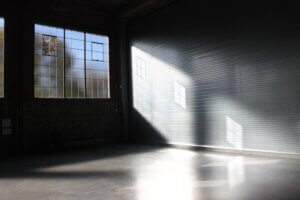Best Professional Mould removal Tips for Your Garage
Best Professional Mould Removal Tips for Your Garage
Summary
The article outlines how to identify, prevent, and remove mould in garages, emphasising the importance of addressing moisture sources, improving ventilation, and regular cleaning. For significant mould removal infestations, structural damage, or health concerns, it recommends professional remediation. It also touches on maintaining air quality and provides FAQs on mould problems, safe cleaning practices, and professional remediation processes.
Mould growth in the garage is a common issue faced by many homeowners. This type of fungus thrives in damp, dark, and poorly ventilated spaces, making garages a prime breeding ground. Mould not only damages your property but can also pose significant health risks.
Identifying Mould in Your Garage
The first step in tackling mould is identifying its presence. Common signs include a musty odour, discolouration of walls, and visible growth on surfaces. Mould can appear in various colours, such as black, green, or white.
Causes of Mould in Garages
Mould growth in garages can be attributed to several factors:
Poor Ventilation: Limited air circulation encourages moisture build-up.
Leaks: Water intrusion from roofs or walls can create moist environments.
Condensation: Fluctuating temperatures can lead to condensation on garage surfaces.
Preventing Mould Growth
Prevention is key in managing mould issues:
Improve Ventilation: Ensure proper airflow by installing vents or fans.
Repair Leaks: Regularly inspect and repair any leaks in your garage.
Control Humidity: Use dehumidifiers to maintain a dry environment.
Safe Mould Removal Methods
Once mould is detected, it’s crucial to remove it safely and effectively:
Protective Gear: Wear gloves, masks, and goggles for safety.
Natural Solutions: Use vinegar or baking soda solutions for mild infestations.
Commercial Cleaners: For severe cases, use specialised mould removal products.
Cleaning and Disinfecting Surfaces
After the mould removal process, clean and disinfect the area:
Thorough Cleaning: Wipe down all surfaces with a cleaning solution.
Disinfecting: Apply a disinfectant to eliminate any remaining spores.
Long-term Mould Management
Regular maintenance is essential for preventing future mould growth:
Routine Inspections: Check your garage regularly for early signs of mould.
Humidity Control: Monitor and maintain optimal humidity levels.
Proper Storage: Store items off the floor and away from walls to reduce moisture accumulation.
When to Call Professionals
You should consider calling in professional mould removal cleaners in the following situations:
Large-Scale Infestation: If the mould covers a large area, typically more than 10 square feet, it’s advisable to hire professionals. They are equipped to handle extensive infestations safely and effectively.
Health Risks: If anyone in your home is allergic or sensitive to mould, it’s safer to use professional services. Prolonged exposure to mould can cause or exacerbate health problems, especially in individuals with respiratory issues or compromised immune systems.
Recurring Mould: If you’ve cleaned mould but it keeps returning, professionals can help identify and solve the underlying issues, such as hidden leaks or insufficient ventilation, that might be causing recurring growth.
Structural Damage: Mould can sometimes cause structural damage to your home, like weakened walls or flooring. Professionals can assess the extent of the damage and take appropriate actions for repair and remediation.
Uncertain Source: If you’re unable to determine the moisture source that’s causing mould growth, professional cleaners can help. They have the tools and expertise to detect hidden water sources like internal leaks.
HVAC Systems: If mould is present in your heating, ventilation, and air conditioning systems, it’s crucial to get professional help. Cleaning HVAC systems requires special equipment and techniques to prevent spreading spores throughout your home.
Type of Mould: Certain types of mould, like black mould, can be more hazardous and difficult to remove. Professionals can accurately identify the mould type and use the appropriate removal methods.
In these scenarios, professional mould cleaners not only remove the mould but also help prevent future growth, ensuring a safer and healthier living environment.
Improving Garage Air Quality
Enhancing your garage’s air quality can significantly reduce the risk of mould:
Install Air Purifiers: These devices help filter out mould spores and other pollutants.
Regular Cleaning: Keep your garage clean and clutter-free to improve air circulation.
Mould growth in the garage is a solvable issue with the right mould removal approach. Regular inspections, effective cleaning, and preventative measures can keep your garage mould-free and safe.
FAQs
How Can I Tell if I Have a Mould Problem in My Home?
Signs of a mould problem include visible mould growth, which can appear in various colours like black, green, or white, a musty odour, water damage, or chronic humidity issues. Allergic reactions or respiratory problems in household members when indoors can also indicate mould presence.
Is It Safe to Clean Mould Myself, or Should I Always Hire Professionals?
Small areas of mould, typically less than 10 square feet, can often be cleaned by homeowners using proper safety gear and cleaning agents. However, for large infestations, areas difficult to access, mould caused by sewage or contaminated water, or if you have health issues that can be exacerbated by mould exposure, it’s safer and more effective to hire professional mould cleaners.
What Does Professional Mould Remediation Involve?
Professional mould remediation typically includes a thorough inspection to identify the extent of the mould problem and its source. The affected area will be contained to prevent mould spores from spreading. Then, using specialised equipment, the mould is removed, and the area is cleaned and disinfected.
Why Choose AllAces?
AllAces Cleaning & Restoration has more than 35 years of industry experience handling extensive mould removal projects in both domestic and commercial settings. Our IICRC-certified technicians are highly trained and experienced, utilising the latest technology and equipment to ensure the return of a pre-loss condition.



